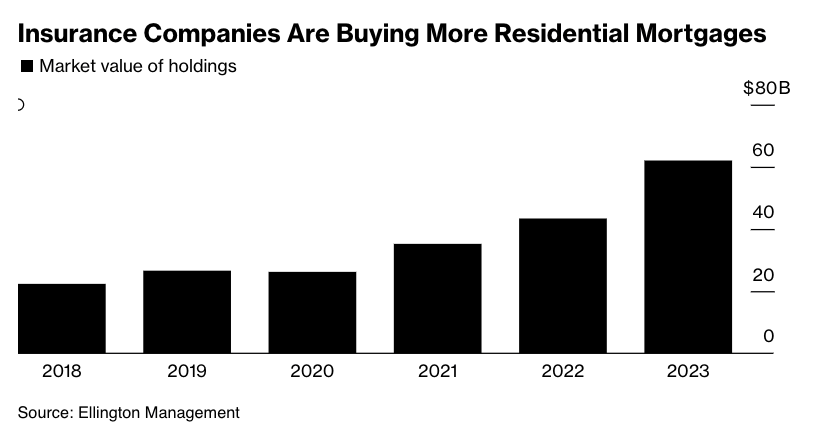History of Housing Finance
The economics of Housing & Homelessness
Based Largely on Chapter Three of Alex F. Schwartz "Housing Policy in the United States"
"Economics has long chafed at its association with “soft” fields such as philosophy and history and thus spent most of the 20th century trying to imitate the hard sciences by becoming more mathematically rigorous. But this attempt didn’t work, because trying to explain the world via mathematical models is still fundamentally interpretive, requiring crucial assumptions about which factors belong in one’s formula at all. The shift instead plunged economics even deeper into esoteric theorizing and insider jargon."
In The News
Incentive
- "Insurers with the capability to own mortgages directly could save some 35-45 basis points on the cost of securitization itself"
- "Substantial amount of capital freed up on insurance company balance sheets because of the better risk treatment"
- "Whole loans get similar treatment as A rated corporate bonds but yield more"
- "A pool of mortgages in their whole loan form gets better risk treatment on insurers’ balance sheets than that same pool of mortgages when held in the form of a bond"
- "Demand is so strong that it’s pulling more mortgages out of the pool available for securitization. The share of all non-qualified mortgages that were securitized into RMBS fell to around 50% in 2023 from about 80% in 2021"
Net Effect
Assets
Libabilities
Bank
Mortgages
Deposits
Liquidity Risk:
Interest Rate Risk:
Key Risks
Maturity Transformation Problem
1930-
Home Loan Bank System (1932)
- Increased liquidity in the mortgage market
- Increased the life of the mortgage
- Increased the loan-to-value ratio
Home Owners Loan Corporation (1933)
- Increased the length of mortgages to 15 years
- Introduced fixed interest rate, self-amortizing mortgages with uniform payments
- Increased the loan-to-value ratio
Federal Housing Administration (1934)
- Offered Insurance to qualified lenders
- Insured mortgages with terms of 25-30 years
- Insured mortgages with significantly higher LTVs (up to 93%)
- Contributed to housing segregation
The Federal National Mortgage Association (1938)
FHA Insured Mortgages
Fannie Mae
Investors
Mortgages
$
Bonds
$
Loans
Securities
Thrifts
Homeowner
Home Loan Bank
Homeowner
Mortgage Company
FHA
FANNIE MAE
Mortgages Prior to 1980
Community Reinvestment Act (1977)
- Passed in response to unequal supply of mortgages in minority and low-income communities
- Required Depository Institutions to lend in their local areas
- This measure was considered by regulators when deciding to approve: mergers & acquisitions
1980-
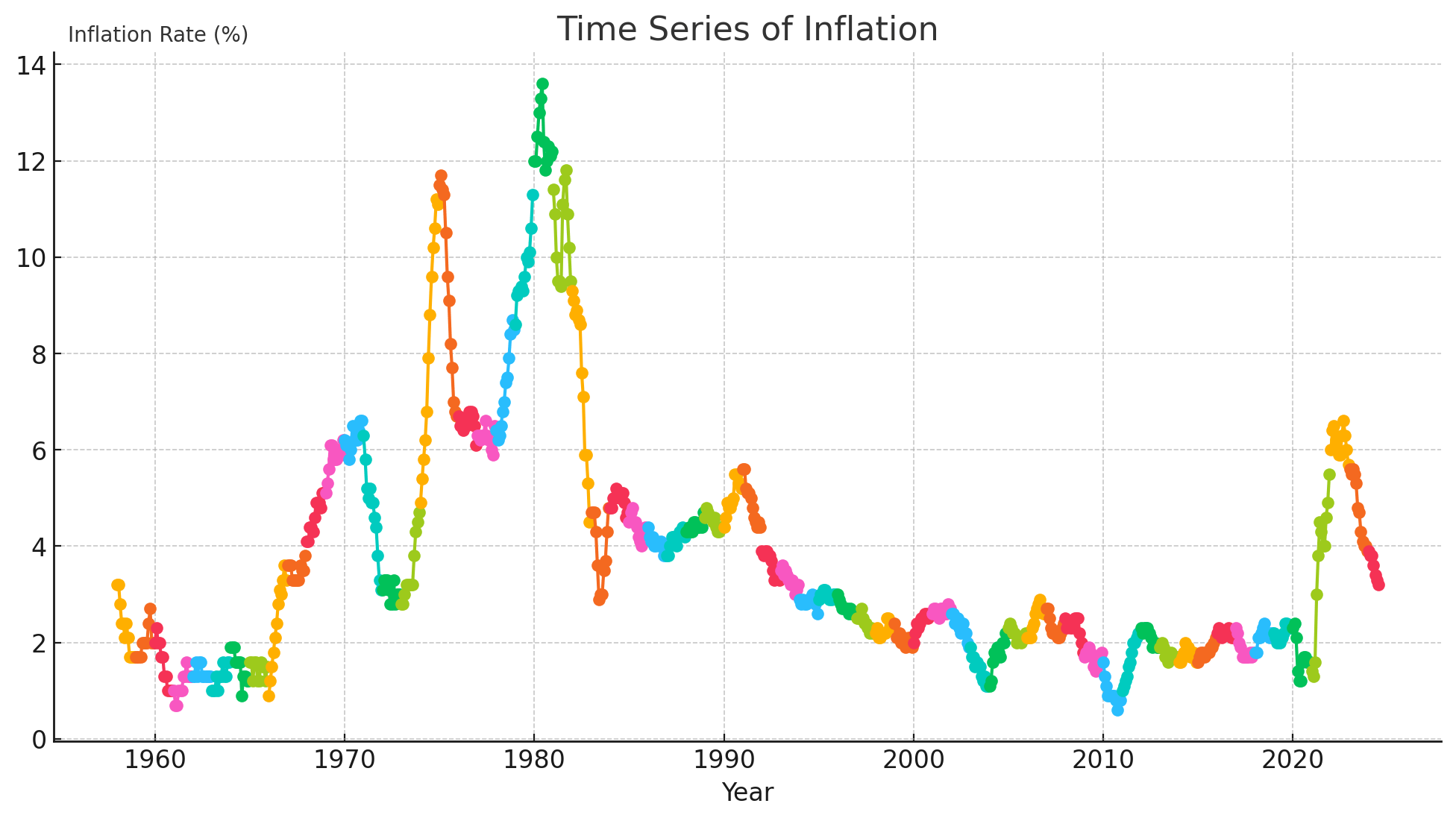
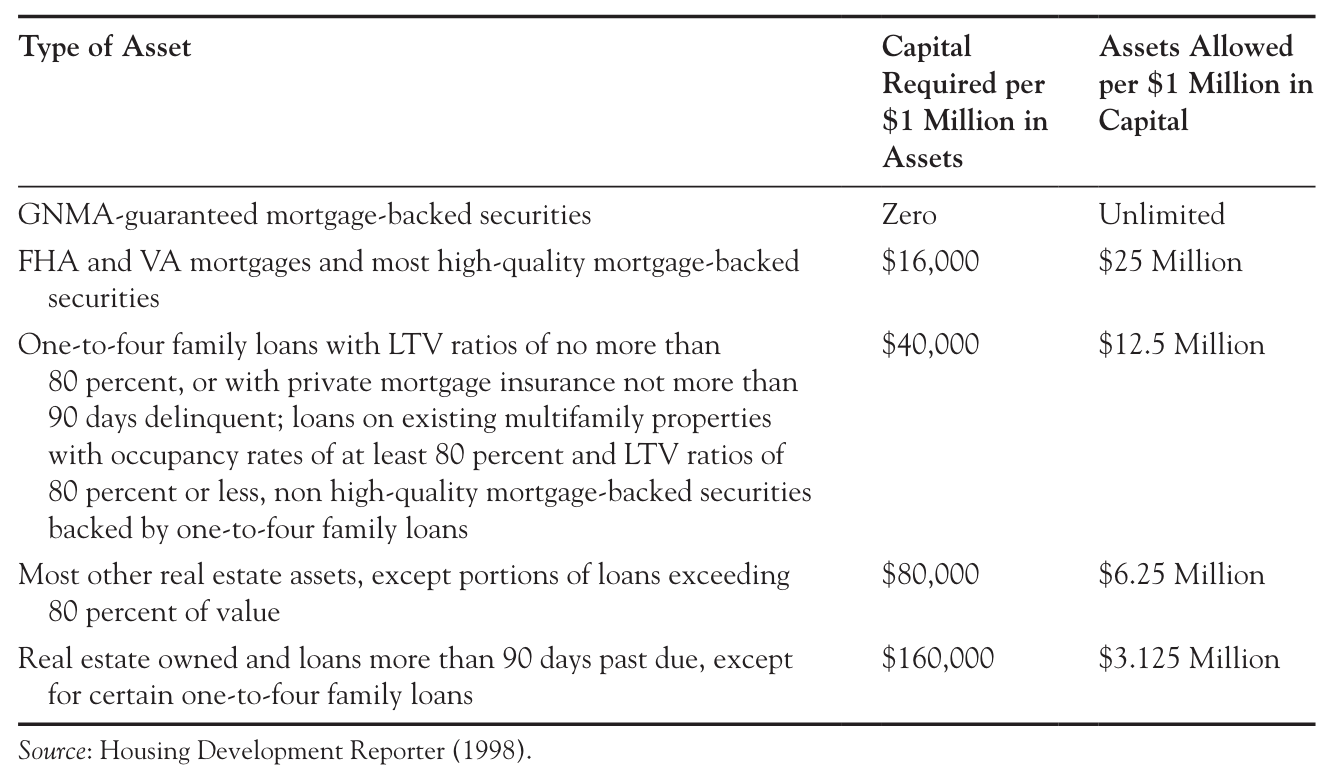
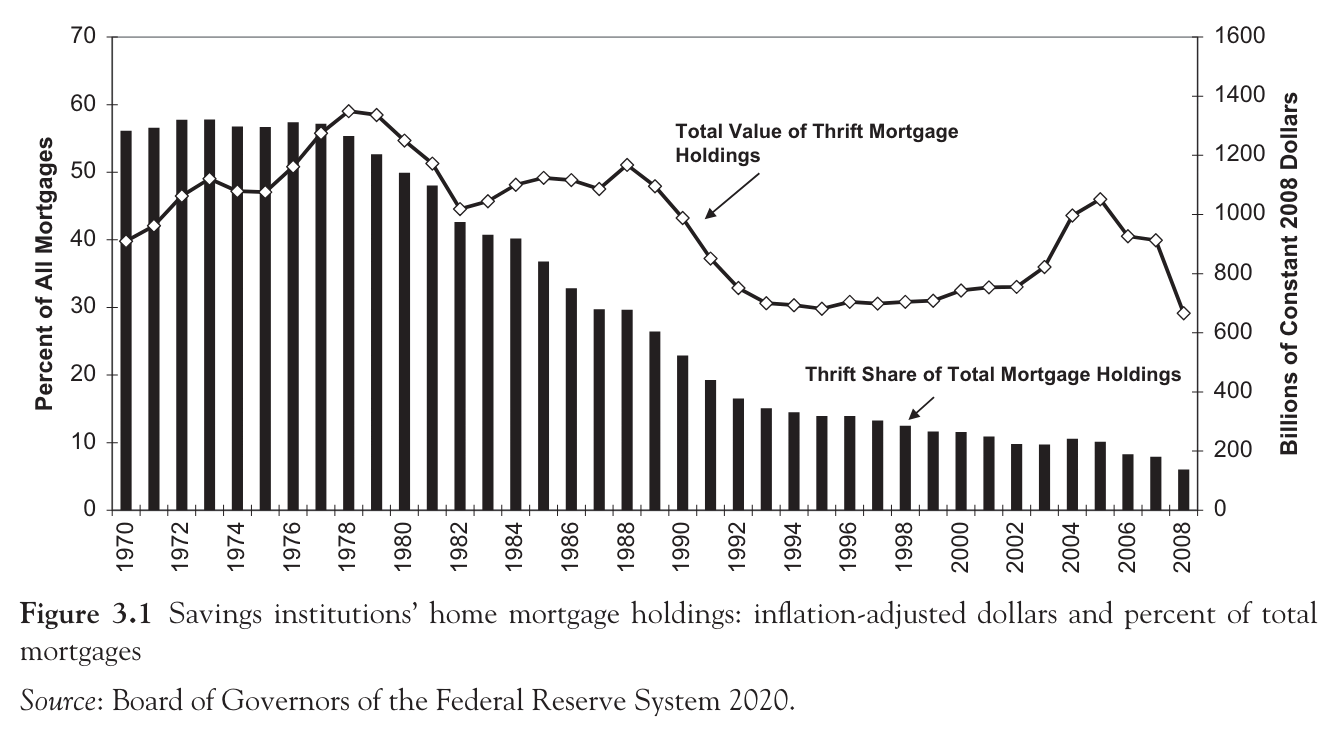
Residential Mortgage Backed Securities
RMBS
Senior Tranche
Mezzanine Tranche
Equity Tranche
Lower Tranches
1990-
Subprime Loan
Alt-A Mortgages
Prime Loan
- Poor Credit History
- High Loan to Value Ratio
- Unsteady Income
- Undocumented assets

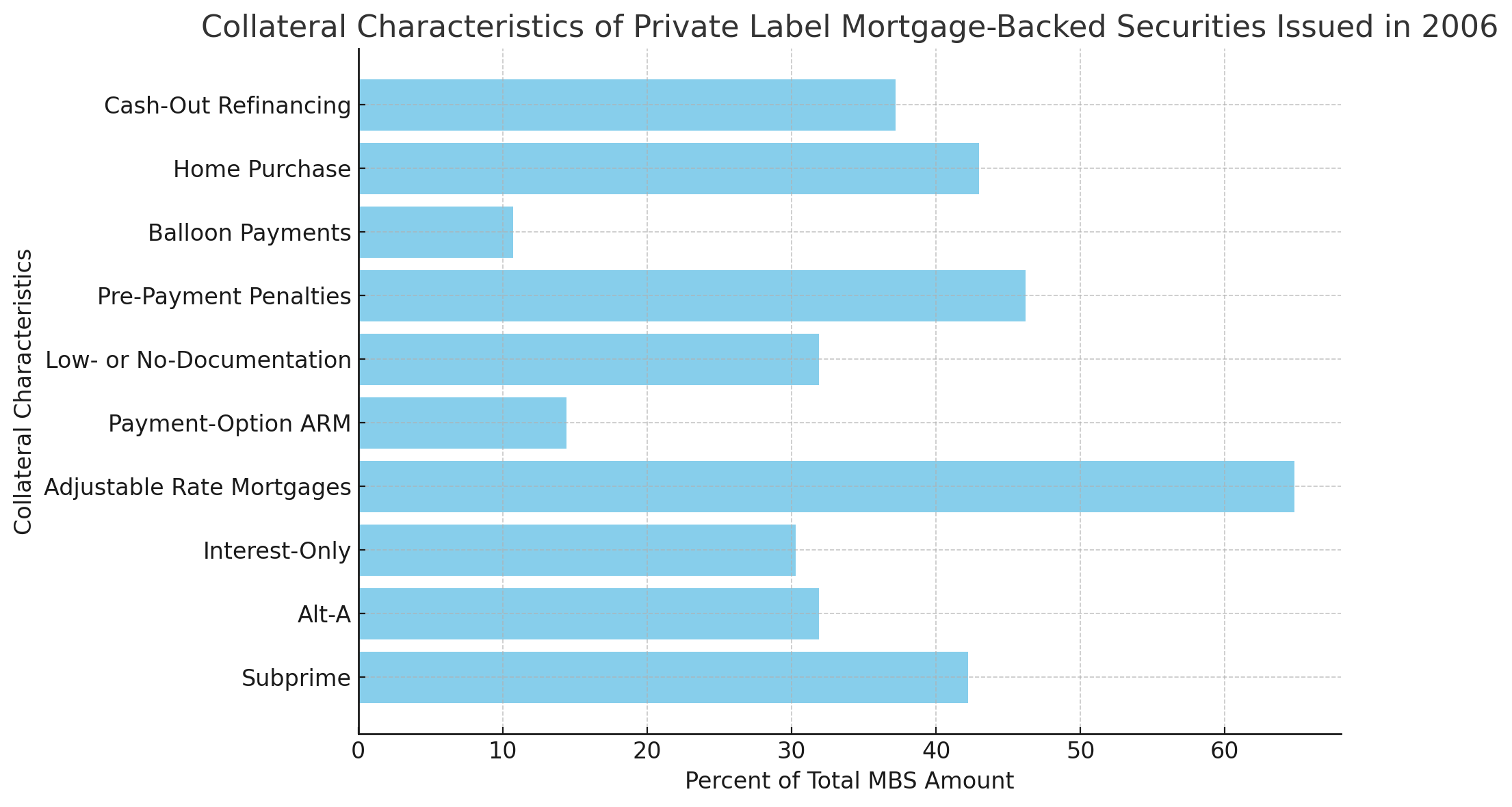


2000-
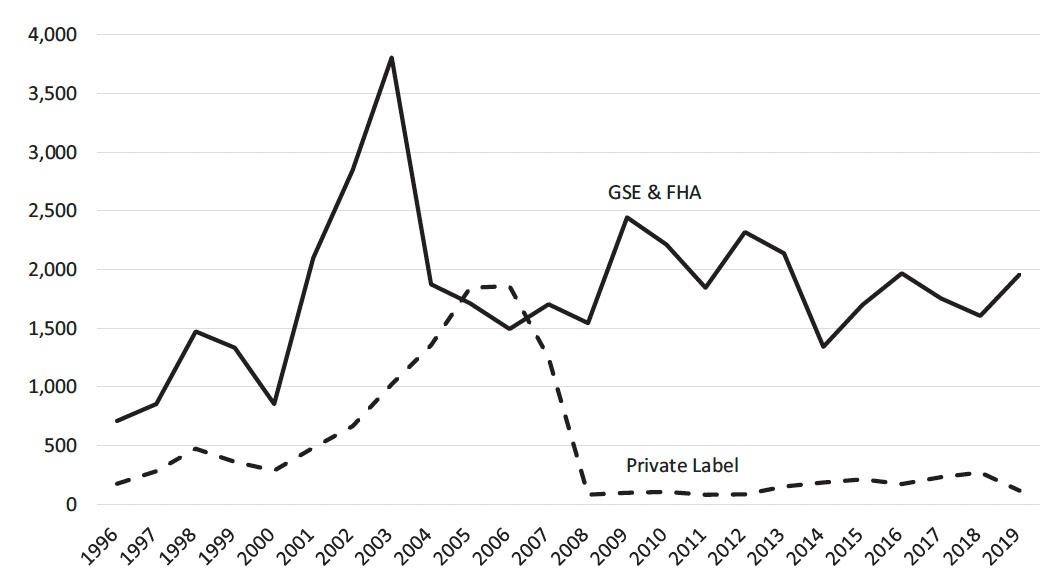
Issuance of mortgage- backed securities, by type, in billions of 2018 dollars
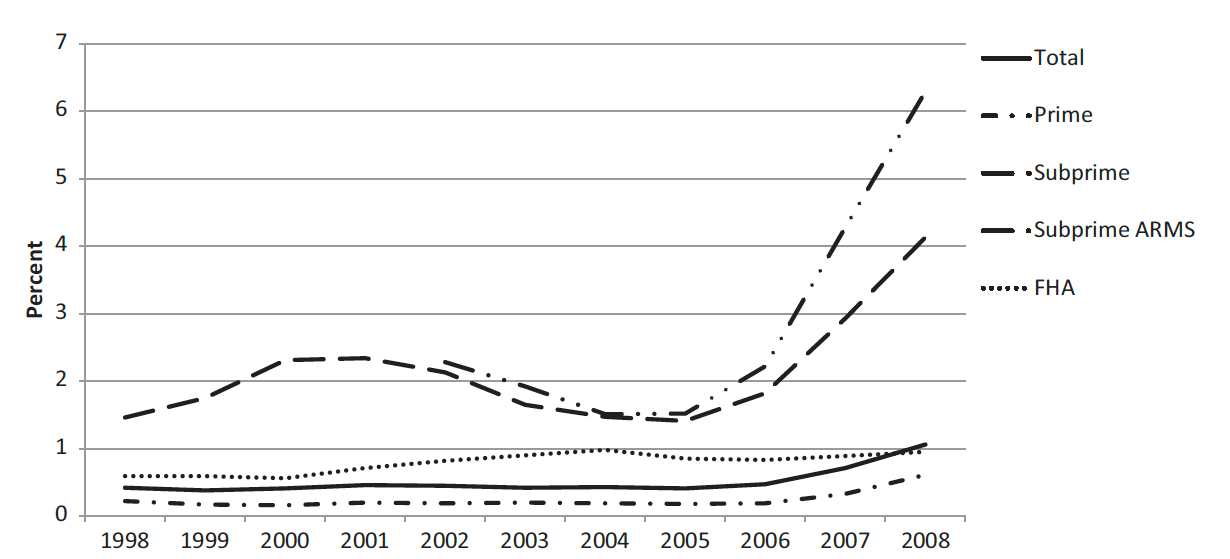
Percent of home mortgages starting foreclosure
Bear Stearns
JPMorgan Chase
Lehman Brothers
Bankruptcy
Merril Lynch
Bank of America
Fannie Mae & Freddie Mac
Conservatorship
2010-
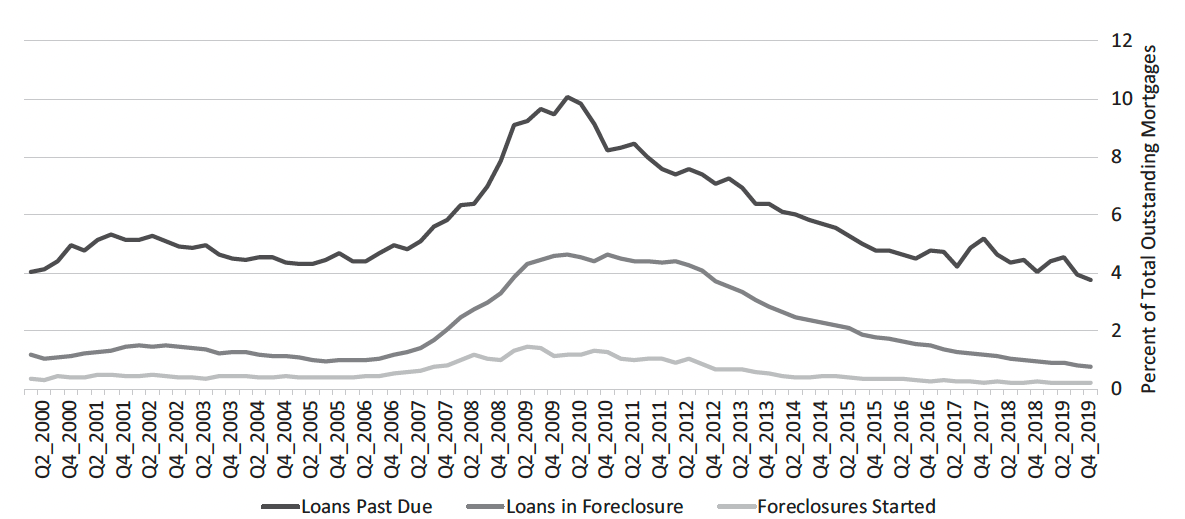
Qualified Mortgages (Consumer Financial Protection Bureau)
- Payments for all types of credit cannot exceed 43%
- All mortgages must be amortized over 30 years and documented
- Underwriting must be on current market-rate interest rates
Surprises
"Senior tranches received the highest ratings, mezzanine tranches lower ratings, and the equity tranches were not rated at all"
"While mortgages on second homes and investment properties can be restructured in bankruptcy court, mortgages on one’s primary residence cannot"
